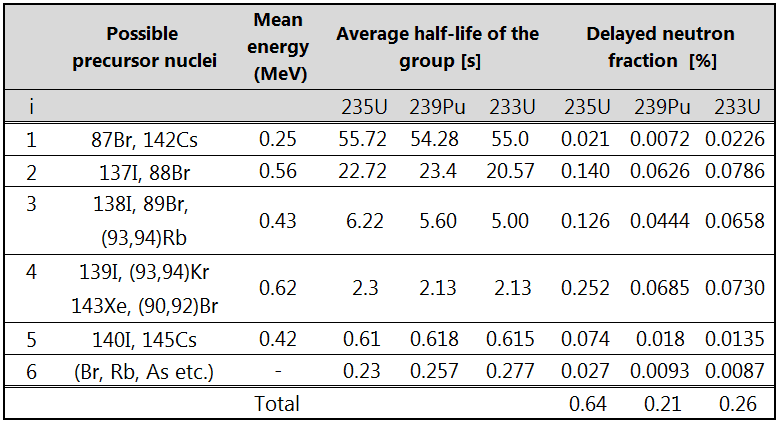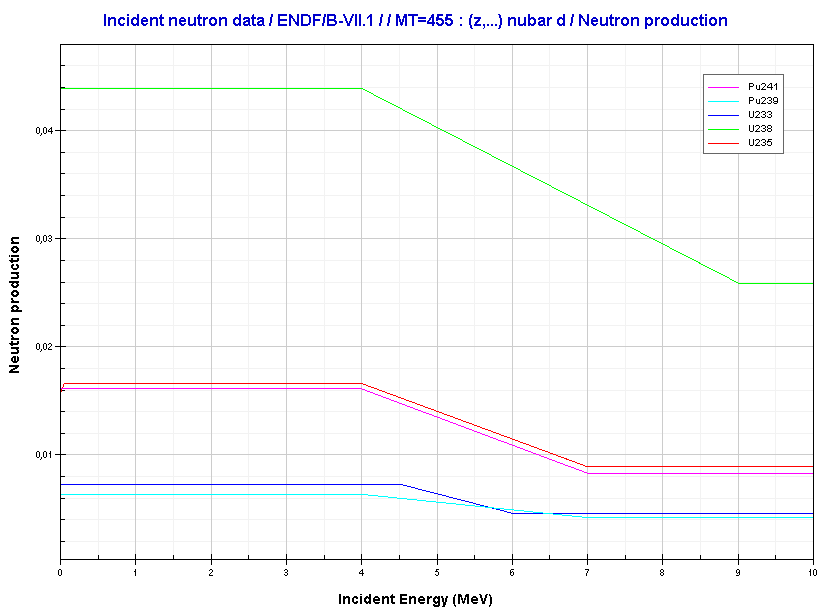Delayed Neutrons Fraction
The total yield of delayed neutrons per fission, vd, depends on:
- An isotope that is fissioned (see table).
- The energy of a neutron induces fission (see chart).
 where βi is defined as the fraction of the neutrons which appear as delayed neutrons in the ith group. In contrast to the prompt neutrons emitted with a continuous energy spectrum, the delayed neutrons in each group appear with a more or less well-defined energy. In general, the delayed neutrons are emitted with much less energy than the most prompt neutrons. The distinction between these two parameters is obvious. The delayed neutron fraction is dependent on the certain reactivity of the multiplying system. On the other hand, β is not dependent on reactivity. These two factors, DNF and β, are not the same things in case of a rapid change in the number of neutrons in the reactor.
where βi is defined as the fraction of the neutrons which appear as delayed neutrons in the ith group. In contrast to the prompt neutrons emitted with a continuous energy spectrum, the delayed neutrons in each group appear with a more or less well-defined energy. In general, the delayed neutrons are emitted with much less energy than the most prompt neutrons. The distinction between these two parameters is obvious. The delayed neutron fraction is dependent on the certain reactivity of the multiplying system. On the other hand, β is not dependent on reactivity. These two factors, DNF and β, are not the same things in case of a rapid change in the number of neutrons in the reactor.In LWRs, the delayed neutron fraction decreases with fuel burnup. This is due to isotopic changes in the fuel. It is simple. Fresh uranium fuel contains only 235U as the fissile material. Meanwhile, during fuel burnup, the importance of fission of 239Pu increases (in some cases up to 50%). Since 239Pu produces significantly less delayed neutrons, the resultant core delayed neutron fraction of a multiplying system decreases (the weighted average of the constituent delayed neutron fractions). This is also the reason why the neutron spectrum in the core becomes harder with fuel burnup.
βcore= ∑ Pi.βi
where Pi is fraction of power generated by isotope i.
Example:Let say the reactor is at the beginning of the cycle and approximately 98% of reactor power is generated by 235U fission and 2% by 238U fission as a result of fast fission. Calculate the core delayed neutron fraction.βcore= ∑ Pi.βi = 0.98 x β235 + 0.02 x β238
= 0.98 x 0.0065 + 0.02 x 0.0157
= 0.0064 + 0.0003
= 0.0067

